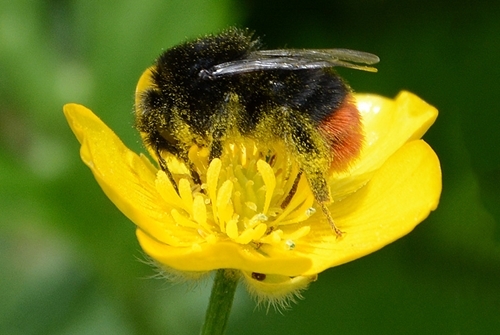
By Sue Evans, Director of GWCT Cymru
I recently listened into our GWCT Tuesday Coffee Morning Seminar given by Rachel Nichols, who is a PhD student at the University of Sussex that is co-supervised by Dr John Holland our GWCT Head of Farmland Ecology.
The talk was on "Improving wild bee diversity on farmland" looking at different wild flower mixes existing and new ones created by her after observing what the bees like. She’s comparing four different seed mixes and is recording the interest in each flower species to see how much pollinating insects like each of them.
The pollinating insects include bumblebees bees, solitary bees, butterflies and hoverflies. I love the practical interest of what she is studying to answer the questions of what should we be planting to encourage insect life which has declined so rapidly in Wales as well as everywhere else.
But what do our bees and insects want, which are the most useful to have on your farm? Of the cover crops which we plant for the birds how many have flowers and which are the most popular for which insect species? A scientific study for us to consider for the future.
What I have always loved about the GWCT is the practical application of our science – a practical problem that needs to be solved – the science to answer the question and then the application to solve the problem.
It's not just on farms that we need to think this question through as I’d been told that many garden flowers are no longer of any use to our bees as they are sterile, not having any honey or pollen to make their journeys worthwhile. So I asked my daft question to our Dr Holland and he replied:
“It's not a daft question. Many bedding plants are sterile but not all. I have started growing my own, time the horticulture industry did more to promote bee-friendly ones! There are labelling schemes with bee-friendly plants having a bee symbol, certainly lots of perennials have them and some annual bedding plants such as Ageraturum, Cosmos, Alyssum and Snapdragons. Also native plants are typically better as bees have evolved with them but again there are exceptions.”
So planting flowers or just having more unsprayed areas of wild flowering plants on our farms would make a big difference. I look forward to a table from Rachel of favourite flowers for solitary ground-nesting bees, which we should all strive to encourage.